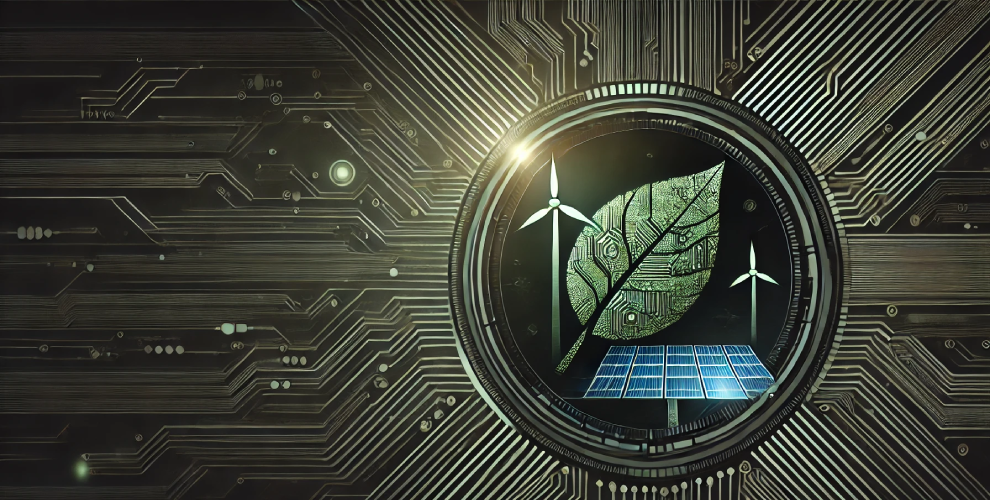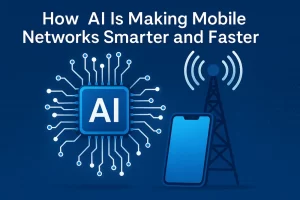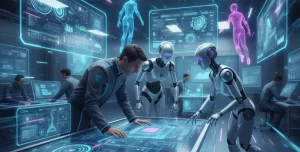
Implementing Green Technology in Everyday Life: Practical Tips and Solutions
Table of Contents
Introduction
Welcome to WikiGlitz! In today’s world, incorporating green technology into our daily lives is more important than ever.
By embracing sustainable practices and using energy-efficient devices, we can reduce our environmental impact and promote a healthier planet. This guide will provide practical tips and solutions for individuals and businesses looking to integrate green technology into their routines.
Key Takeaways
- Adopting green technology in everyday life can significantly reduce energy consumption and environmental impact.
- Energy-efficient appliances and smart home devices offer convenience and cost savings while supporting sustainability.
- Simple changes like using LED lighting and smart thermostats can make a big difference in promoting a sustainable future.
Energy-Efficient Appliances
Benefits of Energy-Efficient Appliances
Energy-efficient appliances consume less power and water, reducing utility bills and environmental impact. Better performance with less resource use is the goal of these appliances’ design.
Examples:
- Smart Refrigerators: Smart refrigerators: Modify the temperature according to usage trends.
- Washing Machines: Use AI to optimize water and energy use.
- Dishwashers: Efficiently clean dishes with minimal water and energy.
Smart Thermostats
How Smart Thermostats Save Energy
Smart thermostats learn your schedule and preferences, automatically adjusting the temperature to save energy when you’re away or asleep. They provide insights into your energy usage and can be controlled remotely via smartphone apps.
Popular Models:
- Nest Learning Thermostat: Learns your schedule and adjusts settings automatically.
- Ecobee SmartThermostat: Uses room sensors to ensure even temperature distribution.
LED Lighting
Advantages of Switching to LED Lighting
LED lights use up to 75% less energy than incandescent bulbs and last much longer. They are available in various colors and brightness levels, making them suitable for any setting.
How to Implement LED Lighting:
- Home: Replace incandescent bulbs with LED bulbs in fixtures and lamps.
- Office: Use LED panels for efficient and bright workspace lighting.
Solar Panels
Benefits of Solar Energy
Solar panels convert sunlight into electricity, reducing reliance on fossil fuels and lowering energy bills. They are a clean, renewable energy source with long-term financial and environmental benefits.
Tips for Installing Solar Panels:
- Assess Your Roof: Ensure your roof gets enough sunlight and is in good condition.
- Choose the Right System: Select a solar panel system that meets your energy needs and budget.
- Professional Installation: Hire certified installers to ensure optimal performance and safety.
Smart Power Strips
How Smart Power Strips Work
Smart power strips prevent energy waste by shutting off power to devices that are not in use. They detect when devices are in standby mode and cut off the power supply, reducing phantom energy consumption.
Examples and Benefits:
- TP-Link Kasa Smart Power Strip: Controls multiple devices remotely and monitors energy usage.
- Belkin Conserve Smart AV: Automatically turns off power to peripheral devices when the main device is off.
Water-Saving Devices
Overview of Water-Saving Devices
Water-saving devices reduce water consumption without compromising performance. They help conserve water, lower utility bills, and support sustainability efforts.
Examples:
- Low-Flow Showerheads: Use less water while maintaining water pressure.
- Smart Irrigation Systems: Optimize watering schedules based on weather and soil moisture.
How These Devices Contribute to Sustainability
By reducing water usage, these devices help preserve water resources, lower energy consumption (as less water needs to be heated), and reduce greenhouse gas emissions associated with water treatment and distribution.
Electric Vehicles
Benefits of Driving Electric Vehicles
Electric vehicles (EVs) produce zero emissions, reducing air pollution and reliance on fossil fuels. They are quieter, require less maintenance, and offer long-term cost savings on fuel.
Charging Infrastructure and Considerations
- Home Charging Stations: Install a Level 2 charger at home for faster charging.
- Public Charging Networks: Utilize apps to locate charging stations on the go.
- Range and Battery Life: Choose an EV with a range that meets your daily needs and consider the availability of charging options.
Home Energy Management Systems
How Home Energy Management Systems Work
Home energy management systems monitor and optimize energy usage across various devices and appliances. They provide insights into energy consumption and offer recommendations for reducing usage.
Examples:
- Sense Energy Monitor: Monitors energy use in real time and determines which gadgets consume the most energy.
- Schneider Electric Wiser: Provides detailed insights and control over your home’s energy consumption.
Benefits of Comprehensive Energy Monitoring
These systems help homeowners make informed decisions about energy use, identify energy-wasting devices, and implement cost-saving measures.
Green Building Materials
Sustainable Materials for Home Improvement
Using sustainable materials in construction and renovation projects reduces environmental impact and promotes resource conservation. These materials are often more durable and can enhance the energy efficiency of buildings.
Examples:
- Bamboo Flooring: A renewable alternative to hardwood.
- Recycled Steel: Used for framing and structural support.
- Low-VOC Paints: Reduce indoor air pollution and improve air quality.
Recycling and Composting
Importance of Recycling and Composting
Recycling reduces waste sent to landfills and conserves natural resources, while composting transforms organic waste into valuable soil amendments, reducing the need for chemical fertilizers.
Tips for Effective Recycling and Composting at Home
- Separate Materials: Properly sort recyclables according to local guidelines.
- Composting: Use a compost bin for kitchen scraps and yard waste, turning it regularly to speed up decomposition.
Green Commuting Options
Benefits of Biking, Walking, and Public Transport
Choosing green commuting options reduces greenhouse gas emissions, decreases traffic congestion, and promotes physical health.
Apps and Tools to Facilitate Green Commuting
- Bike-Share Programs: Use apps to find and rent bikes in your city.
- Public Transport Apps: Plan routes and check schedules for buses, trains, and subways.
- Carpooling Services: Use apps like BlaBlaCar or Waze Carpool to share rides.
Digital Solutions for Paper Reduction
How to Go Paperless with Digital Tools
Reducing paper use saves trees, reduces waste, and cuts down on the energy required for paper production and disposal.
Examples:
- E-Signatures: Use digital signature tools like DocuSign or Adobe Sign to sign documents electronically.
- Cloud Storage: Store and share files digitally using services like Google Drive or Dropbox, eliminating the need for physical copies.
Sustainable Home Office Setup
Creating an Eco-Friendly Home Office
Setting up a sustainable home office involves choosing energy-efficient equipment, minimizing waste, and creating a healthy workspace environment.
Tips for Reducing Energy Use and Waste
- Use Energy Star-rated computers, monitors, and printers.
- Increase the amount of natural light available to minimise the demand for artificial lighting.
- Choose reusable or recycled office supplies to minimize waste.
Smart Home Technology
Integrating Smart Home Devices for Sustainability
Smart home devices can automate and optimize various aspects of home management, leading to significant energy and resource savings.
Examples:
- Smart Speakers: Control smart devices with voice commands and set schedules for lights and appliances.
- Home Automation Systems: Integrate multiple smart devices for comprehensive home management.
Conclusion
WikiGlitz has brought you this comprehensive guide on implementing green technology in everyday life.
By adopting energy-efficient appliances, smart home devices, and sustainable practices, you can reduce your environmental impact, save on utility bills, and contribute to a healthier planet. Start making small changes today for a greener tomorrow!
FAQs
Q1: What are the easiest ways to start incorporating green technology at home? A: Start with simple changes like switching to LED lighting, using smart power strips, and installing a smart thermostat.
Q2: How much can I save by switching to energy-efficient appliances? A: Energy-efficient appliances can save you up to 30% on your utility bills, depending on usage and the specific appliance.
Q3: Are there affordable options for installing solar panels? A: Yes, many companies offer financing options and government incentives to make solar panel installation more affordable.
Q4: How do smart thermostats work to save energy? A: Smart thermostats learn your schedule and preferences to adjust temperatures automatically, reducing energy use when you’re not home.
Q5: What are some tips for setting up a green home office? A: Use energy-efficient equipment, maximize natural light, and choose reusable or recycled office supplies to create an eco-friendly home office.
Want to keep up with our blog?
Our most valuable tips right inside your inbox, once per month.
Error: Contact form not found.
WikiGlitz Team
Welcome to WikiGlitz, your ultimate destination for tech insights and innovation. Our expert team is dedicated to delivering free resources and professional advice on various technology topics, including Artificial Intelligence, Cyber Security, Cloud Computing, and more. We strive to empower our readers with up-to-date information and practical guidance, ensuring you stay ahead in the rapidly evolving tech landscape. At WikiGlitz, we are passionate about making complex technology accessible to everyone. Our team of seasoned experts curates content that is both informative and engaging, helping you understand and leverage the latest tech trends. Whether you're a tech enthusiast or a professional, WikiGlitz is your go-to source for reliable, expert-driven content. Join us on this journey to explore and embrace the future of technology.





